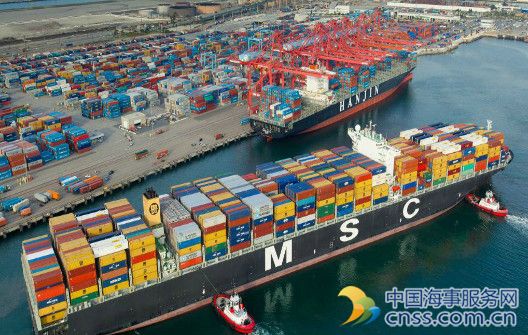TT Talk – Maintaining container safety

Container operators need to ensure they have in place a system for monitoring and maintaining the state of the containers under their stewardship. Diverse stakeholders drive differing requirements.
Under the International Convention for Safe Containers 1972 (CSC), container owners and operators are required to maintain the units in a safe condition. For this purpose, many use industry inspection standards, such as the Unified Container Inspection and Repair Criteria (UCIRC) issued by the International Chamber of Shipping (ICS).
When published, the UCIRC were designed for use at all container inspections, whether in relation to in-service or on / off hire activities. They were intended to be the universal basis for shipping lines, container leasing companies and container operators supporting all general container interchanges.
However, the Institute of Intermodal Container Lessors (IICL) did not accept this standard and retained their existing inspection standard known as ‘IICL V’. Another inspection standard, known as the Common Interchange Criteria (CIC), was subsequently introduced by five members of IICL. Under both these standards, lessees could expect to on-hire containers without deficiencies greater than those described and would be required to return them at off-hire in an equal or better condition. The complexity caused by two different on/off-hire standards has proven difficult for lessees and depots alike. This situation is set to change with the Container Owners Association announcement that from 1 August 2016 the two lessor operated standards (IICL V and CIC) have been amalgamated into one, to be known as IICL VI (IICL6).
In-service maintenance
Once in-service, container operators are at liberty to adopt any inspection criteria, so long as the containers are maintained in a safe and serviceable condition. While these commercial inspection and repair standards cover the main operational issues to keep the container ‘fit for purpose’ and protect the value of the asset, they necessarily dovetail with the CSC list of deficiencies to structural components of the container that would render the container unsafe and not fit for transport. Importantly, this CSC safety standard includes instructions to port control officers and other authorised persons who can stop or restrict the movement of the container.
Thus, when CSC identifies serious structural deficiencies (SSD) that may render the container unsafe, these are distinct from the commercial inspection criteria. For example, so long at the container is safe, the UCIRC, in setting out repair recommendations, states that the most economical repair should be made. Since a leased container may be damaged repeatedly before it is off-hired, it is only at the time of off-hire that the expectations of the lessor need to be met – or the container is so badly damaged that it is written off before or at off-hire.
CSC also requires container operators to use either a Periodic Examination Scheme or an Approved Continuous Examination Programme (ACEP) for any container used for international transport. These maintenance systems will describe how containers are kept safe, but not necessarily the inspection criteria or how repairs are carried out. However, it is good practice for a maintenance system also to set out how the container operator ensures that containers are correctly inspected, examined and, where required, repaired.
Diverse requirements
While the repair methodology will be agreed between the container operator and the repair facility, bringing the container back to a state that any damages do not exceed those described in the in-service or owner’s inspection criteria, it is also important that it meets the requirements of the packer and shipper. Under the IMO/ILO/UNECE Code of Practice for Packing Cargo Transport Units (CTU Code), the packer is responsible for ‘ensuring that the CTU is checked before packing and that the condition of the CTU is suitable for the cargo to be transported’.
However, the shipper is responsible for ensuring that:
-A suitable CTU is used for the intended cargo for the intended transport;
-A CTU is requested which is safe for transport and is clean, free of cargo residues, noxious materials, plants, plant products and visible pests before being supplied to the consignor or packer.
These three cargo-related responsibilities provide a balance; container operators should use inspection criteria, and undertake repairs that not only satisfy CSC safety, but also provide containers that are fit for purpose, meeting the expectations of the customers.
“Whatever the inspection criteria or methods of repair used that achieve both these aims – safety and fitness – the container operator is required to ensure that all workmanship carried out is satisfactory”
Whatever the inspection criteria or methods of repair used that achieve both these aims – safety and fitness – the container operator is required to ensure that all workmanship carried out is satisfactory. Poor workmanship, whether for an owner/lessor or operator, is not acceptable under the CSC. Changes made to the CSC in 2012 and 2013 now require owner’s maintenance systems to be periodically audited to ensure that all aspects described in the documentation are used in practice. In part, this audit process should identify how the owner ensures that repairs carried out on their owned or operated equipment are always safe, but there is no specific requirement that the container is fit for purpose. Containers that are not fit for purpose may result in increased cargo damage or loss.
Conclusion
So, in order to satisfy legal safety requirements and commercial fitness, delivering effective risk mitigation requires that container operators have in place a maintenance system that combines an appropriate inspection criteria, good workmanship, effective controls between container operators and repair/storage facilities and a responsive feedback system from shippers and packers.
Source: TT Club
HEADLINES
- Do shipping markets want Biden or Trump for the win?
- All 18 crew safe after fire on Japanese-owned tanker off Singapore
- Singapore launching $44m co-investment initiative for maritime tech start-ups
- Cosco debuts Global Shipping Industry Chain Cooperation Initiative
- US warns of more shipping sanctions
- China continues seaport consolidation as Dalian offer goes unconditional